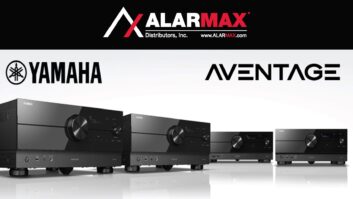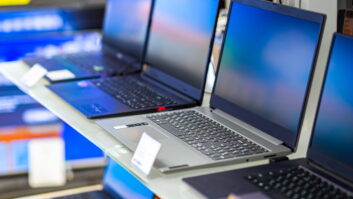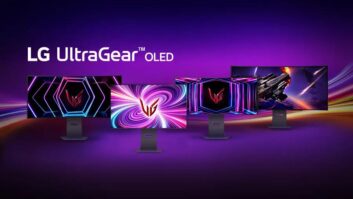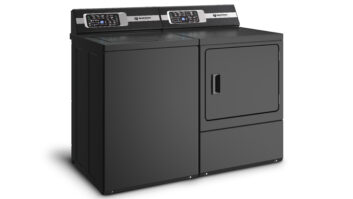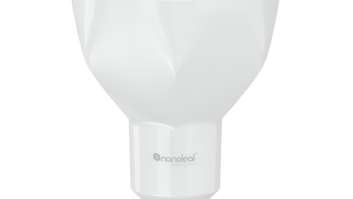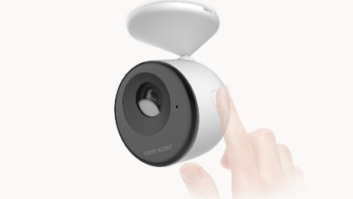Computer hardware products made a comeback at the Fall RetailVision show that was held here earlier this month.
Unlike the spring event, when CE devices like flat-panel TVs took the spotlight, the most recent show saw Linux-powered computers, JVC notebooks and accessories ranging from a battery-less mouse to a device that allows a person to access their home TV programming from anywhere through the Internet.
The remote TV-viewing technology, called the Sling Box, was from RetailVision newcomer Sling Media. The Sling Box is a set-top device that hooks into a home network and a TV’s cable or satellite box. A small software application is then downloaded onto the notebook computer to be used to access TV shows, said Jason Krikorian, Sling’s chief financial officer.
The software gives the computer access to the Sling Box from any Internet connection type, includ- ing wireless. Once connected, the viewer can see any TV shows that would normally play on his or her home television on the computer’s screen. It can also access programming stored on TiVo and other digital video recorders, Krikorian said.
Krikorian envisions road warriors and students being attracted to the Sling Box, along with home owners looking to utilize their notebook computer as a secondary TV. He did admit that it will be a challenge to explain the device to customers, much in the same way TiVo struggled at first, but he expects the company to have a plan in place when it ships next year.
The Sling Box will ship during the first quarter of 2005 with a $249 suggested retail price.
Another RetailVision first-timer was the Canadian firm Axentra. The company showed a $499 home server called the Net Box that can manage a home’s network and allow the owner to set up and administer Web sites and become an e-mail host. This includes creating Web sites with the supplied software and deciding who can or cannot access various places on the Web sites.
“The Net Box is the centerpiece for the digital home,” said Marc-Antoine Benglia, Axentra’s CEO.
The Net Box features an 80GB hard drive and contains the necessary hardware and software to create Ethernet and Wi-Fi home networks, along with the necessary security measures.
Because it requires a computer savvy individual to operate, the Net Box will sell through PC-centric stores. Benglia said the Net Box is now selling through Micro Center and a 10-store pilot program has just started with CompUSA.
One of the new computer accessories introduced at the show was the wireless, batteryless mouse from A4Tech. The mouse uses conductive technology to draw power from a powered mousepad that connects to the PC via the USB port. Unlike most wireless mice, A4Tech model does not use RF signals to send the mouse’s movements to the PC. Instead the pad captures the movements and relays them to the PC.
The company believes the mouse will be a hit because it is lighter and environmentally friendly since it does not create dead batteries that must be discarded. The mouse will ship later this year; pricing has not been set.
Linspire, formerly Lindows, was on hand showing a trio of computers from companies like Northgate and Power Spec based on its Linux operating system. While the desktops and notebooks are now available, the company was looking to drum up additional retail interest in its products, said Lee Little, Linspire’s senior director of sales.
Linspire has developed a retail software giveaway, comprised of two CDs, that enables consumers to try out Linux-based software on their home computer without actually installing the OS. The OS will run off the CD, placing the user in a Linux environment, he said.
“We want to get Linux in their hands,” Little said.
Once hooked, the customer can upgrade to the full system by purchasing the Linspire retail software suite for $59, Little said. For this price, the person gains access to Linspire’s Clik n Go virtual software warehouse where he or she has access to over 1,900 Linux titles.
Little cited IDC data stating that about 3.5 percent of the market is now Linux-based, or about the same as uses Apple’s Macintosh OS, but this could double within the next 12 months to 18 months.
JVC showed its first entry into the U.S. notebook market. The $2,399, 3.4-pound MPXV841US was introduced earlier this summer and started shipping three weeks ago, said Al Levene, JVC’s recording media/new products special markets VP. JVC has sold notebooks in the European and Asian markets, but stayed away from the U.S. market because it did not believe it had a product that would thrive here, he said.
This model will be JVC’s lone model in this category for 2004, but Levene said more should follow next year. JVC will remain in the sub-notebook category and not bring out a larger model, he added.
Microsoft and watchmaker Fossilshowed two upcoming watches featuring Microsoft’s SPOT technology. The new models, the AU4002 and AU4003, will ship in November with $129 suggested retail prices. In addition to the original content provided through the SPOT service — news, weather and traffic — the new models will get in-depth Major League Baseball and NFL coverage. This will go beyond the scoring now available to include scaled down box scores and real-time game scoring.






